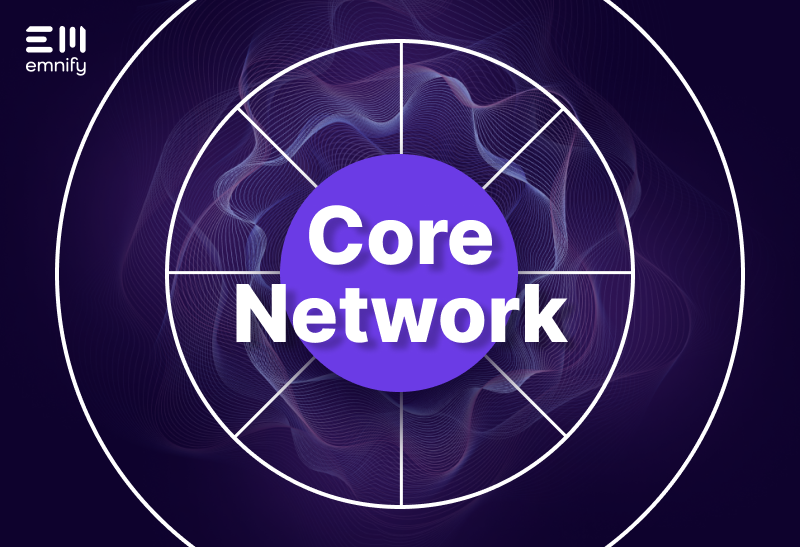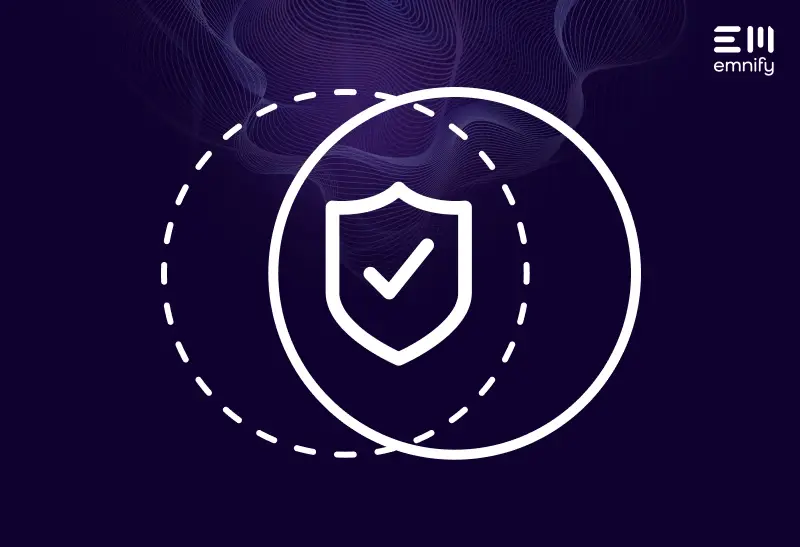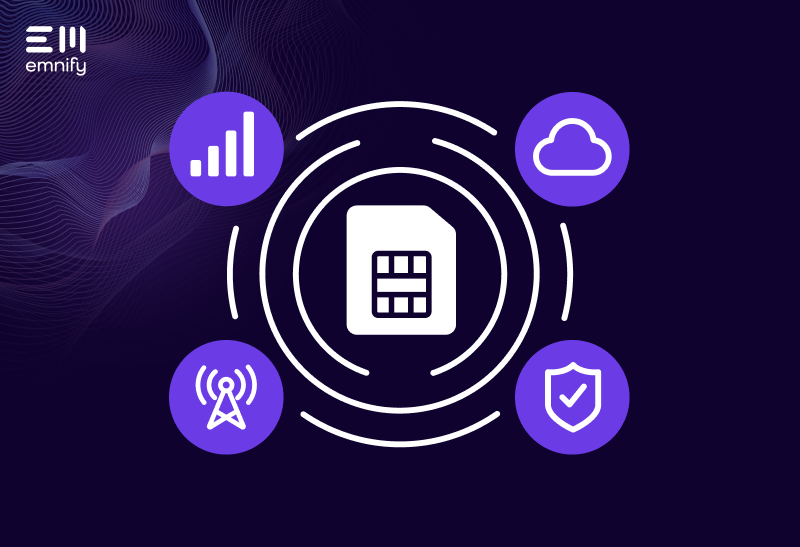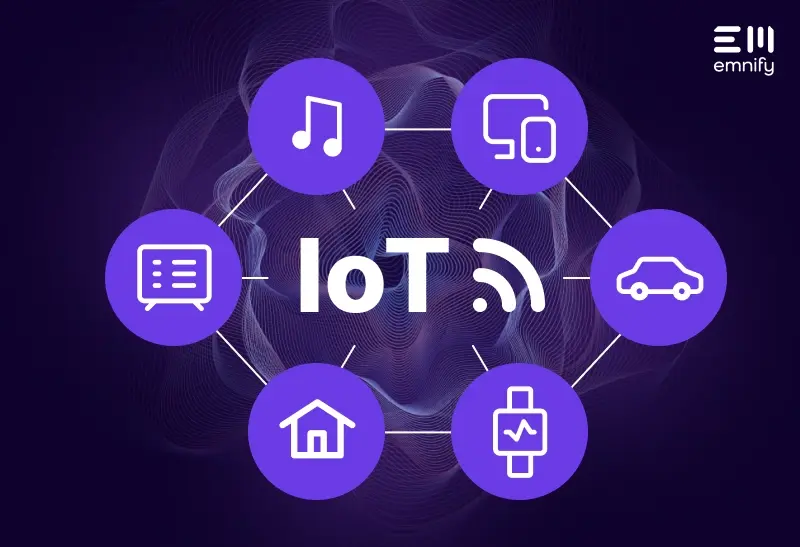

Quick definition: Core networks facilitate critical operations for telecommunications services including authentication, policy enforcement, billing, data routing, and more. Without a core network, a telecommunications provider cannot deliver cellular service, and devices cannot connect to each other or other network entities.
When a cellular device connects to a telecommunications provider and receives service, it connects to the provider’s “core network,” sometimes referred to as a backbone network, mobile core network, or network core. This is the collection of network infrastructure that:
- Identifies and authenticates subscribers
- Determines the service they require and have access to
- Charges the subscriber for services used
- Routes communications to the correct destination
Even when your device is roaming and using coverage from another carrier, communications to or from the device have to pass through your provider’s core network before being routed to the intended recipient. Traditional core networks consist of specialized hardware that resides in a fixed location (such as a datacenter in the US or UK), which can be problematic when a device connects to a network in another country.
Not only does routing data to the core network increase latency by delaying transmissions, but it can also violate data localization laws by routing the data outside of the country. This, coupled with the fact that core network infrastructure is extremely expensive and difficult to build, maintain, and upgrade, is why the telecommunications industry has been exploring ways to virtualize this infrastructure—an achievement emnify was first to accomplish with our fully cloud-native mobile core network, the backbone of the emnify SuperNetwork.
In this article, we’ll take a closer look at why core networks matter and how they impact IoT solutions (which represent the vast majority of cellular devices). Then we’ll explain what makes a cloud-based mobile core network so revolutionary.
Why core networks are vital to cellular connectivity
Whether you have a single smartphone or millions of IoT devices, your cellular connectivity provider needs to know precisely how and when you use their network (or a roaming partner’s network) so that they can authorize, optimize, and appropriately bill for any service you use.
The core network stores information like your International Mobile Subscriber Identity (IMSI), location (through components like HLRs), and authentication keys, all of which are necessary to authenticate devices, users, and services.
Mobile core networks also enforce policies like traffic limits, throttling, or limiting the availability of specific services (2G, 3G, 4G, etc.). It’s why someone without an unlimited data plan won’t have access to unlimited high-speed data. It can also protect, for example, an IoT customer with device-specific data limits from being blindsided by unexpected costs.
Depending on the customer and the contract, an individual device may have different data costs. Providers also need to track data consumption and any applicable roaming charges to ensure they bill and invoice customers appropriately. The core network encompasses all of the infrastructure that makes this possible.
But core networks don’t simply make sure you’re paying for the cellular service you use—they also route your data, SMS, and voice transmissions to devices, the public Internet, Public Switching Telephone Networks (PSTNs), and other operator networks.
How your provider’s core network affects your IoT solution
IoT manufacturers and the organizations they serve often need to deploy in multiple countries, and select a connectivity provider based on which has the best costs and coverage in the geographies they need to deploy. But whether you deploy in multiple countries from the start or expand to new ones over time, your provider’s core network affects your solution in several key ways:
- It governs your visibility into network events (like connections and connection failures)
- All data must be routed through the core network
- It determines your compliance with data localization laws
The core network governs your visibility and management capabilities
First, it’s important to understand that traditional core networks are built by a handful of Network Equipment Manufacturers (NEMs)—Ericsson, Nokia, Huawei, or Alcatel-Lucent—and the visibility, management, and troubleshooting capabilities available in your connectivity management portal depend on the data the NEM exposes to the connectivity provider.Some providers have extremely limited visibility into network events, which directly affects your service and experience. This becomes even more problematic when your devices are roaming, as most providers have even less visibility into network events on a roaming partner’s network. And if there’s an issue, you’ll be stuck waiting for your provider to troubleshoot with their partner on your behalf.
All data has to be routed through the core network
Anytime your devices are roaming, the mobile core network has to act as an intermediary—transmissions to and from your device have to travel to your provider’s core network’s datacenter before being routed to their final destination, which can increase latency.
Depending on your use case, that may not be a significant issue. But if you manufacture medical IoT devices, smart manufacturing equipment, or smart vehicles, for example, these delays could drastically alter the customer experience from one country to another and have devastating consequences for your end users.
It determines your compliance with data localization laws
A growing number of countries also have various forms of data localization (also known as data residency) laws which forbid the storing or processing of data in foreign countries. If you deploy in one of these countries and your connectivity provider’s core network is in another country, you may violate data localization laws every time your devices connect, which can result in fines and penalties, including a ban of your services altogether.
These are some of the main reasons why emnify’s cloud-native core network has been such a game changer for IoT businesses.
The value of a cloud-native core network
When your connectivity provider’s core network is in the cloud, it can go wherever your devices go. Instead of routing your data to a fixed datacenter in a specific country, we use regional Internet breakouts from cloud service providers to deploy our core network as close to your devices as possible.
Whatever network your devices connect to with an emnify SIM, all the data going to or from the devices has to pass through emnify’s core network, where we expose network events and everything you need to monitor, manage, automate, and control your IoT devices. It’s why every network our SIMs have access to is part of the emnify SuperNetwork—you get the same experience and capabilities wherever you deploy.
By routing your data through regional data centers, the emnify SuperNetwork keeps your data local and your latency low. You don’t have to worry about violating data localization laws because we automatically detect when your devices are in a country with these regulations and intelligently route your data to keep your business in compliance.
Empower your IoT solution with a cloud-based core network
As a leading cellular IoT connectivity provider, emnify has focused on the challenges and opportunities within IoT from the beginning. The emnify SuperNetwork leverages a cloud-native core network to deliver consistent, scalable, and reliable service for IoT manufacturers all around the world. Wherever you deploy, we provide redundant regional coverage and give you complete visibility into your devices’ connectivity.
Want to see what emnify can do for your IoT business?
Start a free trial today, and we’ll send you a free emnify IoT eSIM with a prepaid data plan and 60 days of complete access to our platform. Or, talk to one of our IoT experts.
Get in touch with our IoT experts
Discover how emnify can help you grow your business and talk to one of our IoT consultants today!

With a career spanning over 18 years in storytelling and content creation, Bronwyn translates technical concepts and ideas into snackable and easy-to-digest content.


